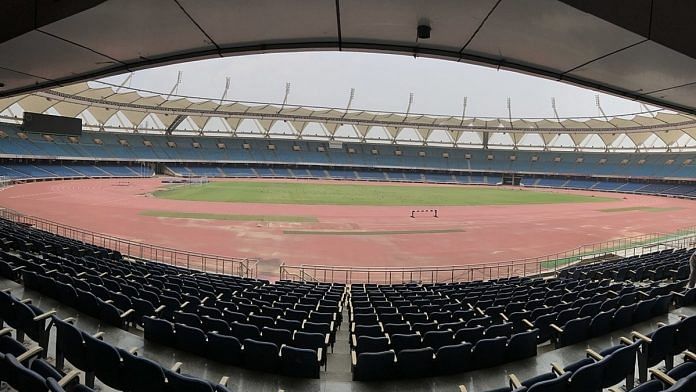New Delhi: India’s famous sports stadiums may soon be leased out to the private sector on a long-term basis as the Narendra Modi government looks to aggressively roll out its plan to garner more revenues from its vast physical assets.
The well-known Jawaharlal Nehru Stadium and a few other stadiums in the national capital could be the first to be leased out, according to two finance ministry officials who didn’t wish to be named.
“Stadiums could be leased to the private sector by way of an operational and maintenance contract. This could be a long-term contract for 30 years,” said the first official. “The private firm will have to make an upfront payment and will then be able to garner revenues by levy of user charges for events held at the stadiums.”
The government is of the view that many private sports companies may be willing to enter into contracts for operating these stadiums.
“At present, these stadiums are lying vacant for the majority of the year. A district sports officer has no incentive to ensure that the stadiums are used regularly,” the official said.
The second official pointed out that the government may have clauses in the contracts with the private firms to ensure that national and international sports events are facilitated at the sports stadiums.
Over the last few years, the sports ministry has been trying to explore ways of how stadiums in Delhi could be utilised more effectively.
In 2016, the government had also proposed to engage consultants who could suggest how these stadiums can be used throughout the year and not only during any major sporting events.
Besides the Jawaharlal Nehru Stadium, the stadiums that fall under the purview of the Ministry of Sports and Youth Affairs include the Indira Gandhi Sports Complex, Major Dhyan Chand National Stadium, Dr Shyama Prasad Mukherjee Swimming Pool Complex and Dr Karni Singh Shooting Range.
Also read: PM Modi explains how govt will use funds from privatisation & asset monetisation for welfare
Big push for asset monetisation in the budget
This time around, there is a renewed push for asset monetisation in the Union budget.
Monetising public infrastructure assets is an important financing option for new infrastructure construction, Finance Minister Nirmala Sitharaman had said in her budget speech on 1 February.
The speech had also pointed out how along with asset monetisation, the government will build institutions like a development finance institution and allocate more money for capital expenditure as part of its ambitious National Infrastructure Pipeline.
Sitharaman had announced the setting up of a national monetisation pipeline of brownfield infrastructure assets along with an asset monetisation dashboard for tracking the progress of the monetisation drive and to provide visibility to investors.
“Leasing to the private sector is one of the options for asset monetisation but different government departments are exploring other ways of leveraging the vast government holdings,” said the second official.
The government is planning to use options like investment trusts or InvIT sponsored by National Highways Authority of India and Power Grid Corp of India Ltd separately for monetising road and power transmission assets.
The railway dedicated freight corridor assets, airports, operational toll roads, oil and gas pipelines of state owned firms and warehousing assets like those of NAFED and Central Warehousing Corporation are proposed to be monetised too.
On Wednesday, Prime Minister Narendra Modi said the government’s aim is to monetise 100 assets with a potential investment of Rs 2.5 lakh crore.
Also read: This is NITI Aayog’s blueprint to make India a global manufacturing hub






